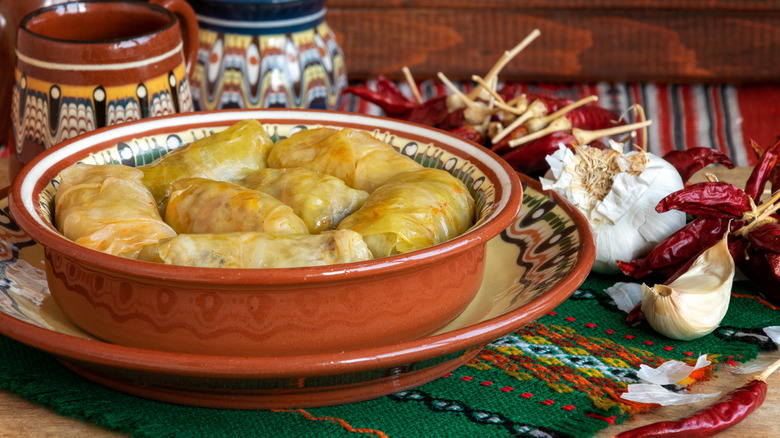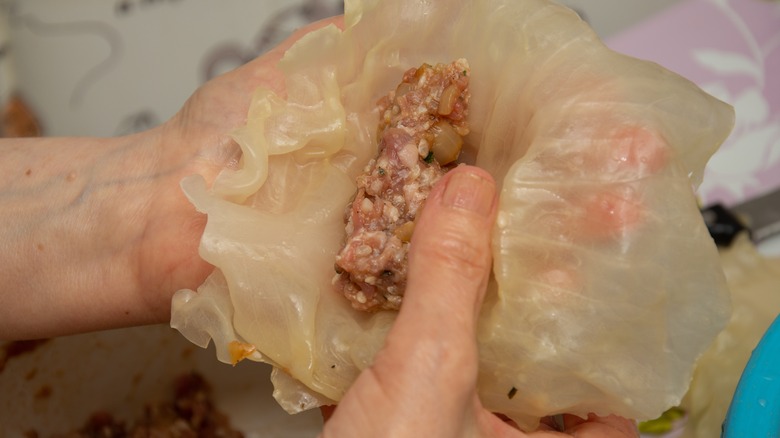The Ingredients That Make Romanian Cabbage Rolls Unique
Cabbage rolls are a historic and cultural dish that have definitively garnered popularity across the globe. The dish is relatively healthful and concurrently tasty, with a complex blend of savory, sweet, and sour flavor profiles. No matter where they are made in the world, they often follow the same basic structure: a meat or vegetable-packed filling wrapped in delicate cabbage leaves. They're often soft from being boiled or simmered in a flavorful sauce.
According to La Jolla Light, many countries lay claim to cabbage roll origins. However, it is believed the first cabbage rolls are from the ancient Middle East and have gotten to Eastern Europe and other regions through trade routes. Scandinavian cuisine often features cabbage rolls, as well as certain regions in Asia and the Middle East. However, they may be most popular in Eastern Europe. Countries like Bulgaria, Slovenia, Hungary, Ukraine, Serbia, and Romania, according to Tried and True, all have their own unique variations of the dish. But, Romania's variety is special because they have seemed to make cabbage rolls an integral aspect of their culture.
A Romanian flavor infusion
In Romania, cabbage rolls are known as sarmale. Tried and True notes that this word has roots in the Turkish word sarmak, which translates to "roll or package." The dish is usually wrapped with cabbage leaves, which are often pickled. Using pickled leaves creates a stronger overall taste in the roll, which many Eastern Europeans prefer. It can also add a bit of a sour flavor, which pairs nicely with the other sweet and savory elements.
As for the all-important filling, some countries opt for a beef, chicken, or veggie-packed base. While these alternative fillings can appear in the Romanian rendition, they often use pork. Ground pork is a great base, as the higher fat content adds abundant flavor to the rolls. The pork can be combined with boiled rice and caramelized onion for a quintessential Romanian take on the dish, as per La Jolla Light.
When it comes to toppings and garnish, it is very customizable. However, traditionally, the rolls will come covered in dill and tomato sauce. Many cultures simmer cabbage rolls in tomato sauce, but Romanians have a specific tomato juice recipe that they use called bulion. Tried and True doesn't describe what bulion is exactly, but we imagine it's a more concentrated tomato juice from the name. Romanians will often indulge in the traditional meal around holidays, whether for Christmas or Romanian national holidays. Whatever the occasion, you can be sure to see cabbage rolls on the menu.

